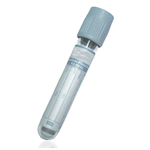Suitable Specimen Types
- Fluoride Oxalate
Specimen Transport
Send sample on the first available transport
Sample Processing in Laboratory
No special transport conditions. Sample should be transported to laboratory asap
Book in as FFASample Preparation
Centrifuge and send to reference laboratory ASAP.
Turnaround Time
2 weeksSample Stability
Freeze plasma at -20 oC if not sent immediately.
3 HydroxyButyrate (BHB)
General Information
The measurement of 3-hydoxy-butyrate is used together with free fatty acids (FFA) as a useful first line indicator of inherited defects of mitochondrial fatty acid catabolism. Ideally specimens should be taken during acute hypoglycaemic episodes or after a provocative fast. In most circumstances, as blood glucose falls, lipolysis and subsequently ketogenesis are stimulated; thus the plasma concentration of FFA and 3-hydroxybutyrate increase in an approximately equimolar fashion. In fatty acid oxidation defects, lipolysis will still be stimulated in response to a drop in blood glucose, but ketogenesis will be reduced. Therefore, a disproportionately high free fatty acid concentration relative to a low 3-hydroxy-butyrate concentration is found, particularly during periods of stress i.e. infection, coma, fasting and hypoglycaemia. In patients with hyperinsulinism, FFA and 3- hydroxybutyrate levels will both be low, as insulin suppresses lipolysis. This pattern will also be observed in patients with hypopituitarism, therefore this test can not be used to diagnose hyperinsulinism. However, hyperinsulinism can be ruled out by the demonstration of ketosis, i.e. elevated FFA and 3-hydroxy butyrate in the presence of hypoglycaemia. See www.metbio.net for Best Practice Guidelines for the Investigation of Hypoglycaemia in Infants and Children.
Patient Preparation
Please supply glucose result and details of fasting.
Notes
None Given
Reference Range
Provided by reference laboratory.
Specifications
- EQA Scheme?: Yes
-
EQA Status:
Referral Laboratory participates in an EQA scheme
